AMERICA
Copper market rocked by Chilean mine strike
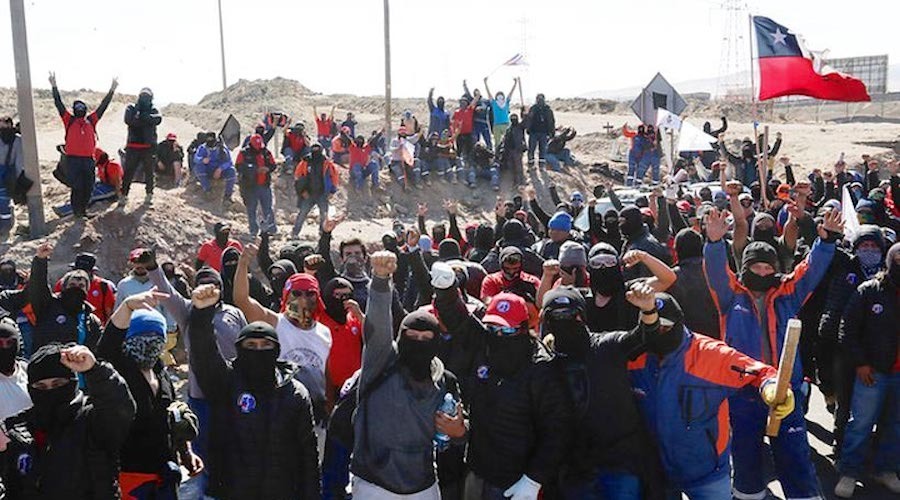
Unionised workers at Escondida, the world’s largest copper mine in northern Chile, went on strike on Tuesday 13 August. If the strike continues, the copper market could lose hundreds of millions of dollars.
Workers from Union No.1 at the Escondida mine, which means ‘hidden’, in northern Chile went on strike on Tuesday 13 August. The Escondida mine is a major source of copper, accounting for 5 per cent of the world’s total mined copper. The mine takes its name from the rich ore deposits ‘hidden’ beneath the Atamaca desert. While it is known that 90 per cent of the workers at Australia-based BHP, the world’s largest copper mining company, are members of the union, BHP, which owns 60 per cent of the shares in the Escondida mine, was shaken by the strike. The workers’ demands include a reduction in working days, an increase in bonuses and compensation payments, and the distribution of 1% of the mine’s shares to the workers. The distribution of shares to the workers, which is one of the main points of contention, amounts to $35,000 per worker. During the dispute, BHP offered the workers a bonus of $28,900, but the workers did not take up the offer, which was well below their expectations of $35,000.
BHP declares state of emergency
The process of reaching an agreement between BHP and the union continues. The company, in disagreement with the union over the demands, has declared a state of emergency and is continuing to mine with non-union labour. The union responded by accusing BHP of breaking strike rules by using reserve labour and demanding ‘an immediate end to this anti-union practice’.
In a statement, BHP said it had invited the union to resume talks on Tuesday, but that the invitation had gone unanswered, and that it had implemented its contingency plan and continued mining operations with non-union workers on minimum hours. On 14 August, the company offered the union to suspend the strike until 8pm on 15 August if negotiations continued. However, the union is not in favour of suspending the strike, even temporarily. According to the union, BHP has placed too many conditions on the resumption of negotiations, while at the same time replacing workers and engaging in anti-union activities. The union described the company’s demands and conditions as “making it impossible to resume talks” and complained that the company had given it too little time to assess the conditions and make a decision.
‘BHP could lose $795m if strike drags on’
Following the start of the strike, the French news agency AFP reported today that BHP shares had fallen by almost 1 per cent. US investment bank Goldman Sachs highlighted that the company would lose at least $250 million if the strike lasted 10 days, while Brazilian investment bank BTG Pactual highlighted the union’s strike in 2017. According to BTG Pactual, if the current strike lasts as long as the one in 2017, BHP’s daily loss could be between $25m and $30m. The Brazilian investment bank noted in its report that the current situation is also damaging Chile’s GDP (Gross Domestic Product). Goldman Sachs estimated that if the strike lasted 44 days, the damage would reach USD 795 million.
Copper stock markets are shaky
In addition to the damage to the company, it is also interesting to see how the copper market will be affected by this strike. The copper market was shaken by the closure of the Panamanian copper company Cobre Panama in the final months of last year. If the current strike at the Escondida mine, which is very important to the market, has a similar result to the copper price spike caused by the strike in 2017, it could be very damaging to the market. According to the Australian Mining news agency, the Copper Exchange is struggling to hold on to its gains from the Covid-19 period. Despite the risk of disruption, copper prices are currently holding steady at the London Metal Exchange’s announced price of USD 8,968.50 per tonne, in line with weak demand from China. However, this could change if the strike continues.
AMERICA
Judge orders Trump administration to preserve Signal chats about Yemen operation

A federal judge ordered the Trump administration to preserve chats conducted by senior officials via the Signal messaging app, including messages mistakenly shared with a reporter earlier this month concerning an imminent military operation in Yemen.
US District Judge James Boasberg issued the ruling on Thursday at the request of a transparency group that sued, alleging the app’s auto-delete function risked destroying the messages in violation of the Federal Records Act.
During a brief afternoon hearing, Justice Department lawyer Amber Richer told Boasberg such an order was unnecessary because the relevant agencies were already taking steps to preserve the records. However, she did not object to the judge reinforcing this with a court order.
“We are still in the process of working with the agencies to determine what records they have, but we are also working with the agencies to preserve the records they do possess,” Richer said.
However, the government lawyer appeared to acknowledge a court filing made earlier in the day by a Treasury Department official, which suggested that Treasury Secretary Scott Bessent currently possesses only a portion of the message chain related to the Yemen strike.
The journalist added to the message chain, The Atlantic editor Jeffrey Goldberg, reported that the chat began on March 11. Yet, Bessent only has messages starting from the afternoon of March 15. It remains unclear why Bessent failed to preserve the earlier messages or whether other senior officials in the chat retained them.
Richer stated to Boasberg, “I want to note that we are still determining what records the agencies possess.”
The Atlantic published parts of the messages earlier this week and the remainder on Wednesday after the White House stated it did not consider the exchanges classified, even though they described the scope and timeline of a military operation that had not yet occurred.
According to The Atlantic‘s report, national security adviser Mike Waltz, who initiated the exchange, had initially set the messages to auto-delete after one week but later changed the duration to four weeks.
Speaking from the bench, Boasberg ordered the defendants in the case—Secretary of State Marco Rubio, Treasury Secretary Scott Bessent, Defense Secretary Pete Hegseth, Director of National Intelligence Tulsi Gabbard, and CIA Director John Ratcliffe—”to preserve all Signal communications between March 11 and March 15.”
This directive appears broader than just the messages shared with Goldberg; it could encompass other Signal messages sent or received by the officials during that period.
A Pentagon lawyer also submitted a written declaration stating the Defense Department was attempting to preserve these records as well but did not claim any records had been recovered. The administration suggested that The Atlantic‘s publication of the entire exchange, except for the redaction of a CIA officer’s name, ensured the messages’ preservation.
At the start of the hearing, Boasberg also responded to a social media post by President Donald Trump suggesting the judge had improperly gained control of the politically sensitive case.
Trump had called it “shameful” that the judge, an appointee of former President Barack Obama, was handling multiple legal cases involving the White House in recent weeks. In addition to the Signal case, Boasberg is presiding over a case involving Trump’s efforts to rapidly deport people using the Alien Enemies Act.
Boasberg addressed the matter, stating he “understood some questions had been raised” about how the court assigns cases. He explained that for the 15 active judges serving on the court, cases are randomly assigned across various categories in nearly all instances “to ensure a more even distribution of cases.”
Clerks use an electronic deck of cards within each category to determine which judge receives a newly filed case.
“That is how it works, and that is how all cases continue to be assigned in this court,” said Boasberg, who has served as the court’s chief judge since 2023.
AMERICA
US revokes visa of Turkish PhD student Rumeysa Ozturk
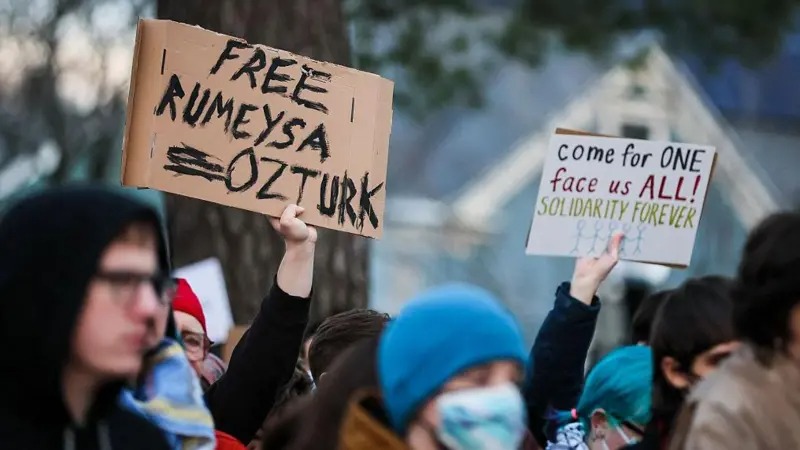
Turkish student Rumeysa Ozturk, pursuing a doctorate at Tufts University in Boston, Massachusetts, US, was detained on March 25.
Speaking about the incident, which gained attention in the US, Senator Marco Rubio confirmed that Ozturk’s visa had been canceled.
Rubio stated, “We gave you a visa to get an education; not to be a social activist who destroys our campuses. If you use your visa to do that, we will take your visa back. I encourage every country to do the same.”
The US Senator continued, “If you lie to get a visa, and then engage in this type of behavior after arriving here, we will cancel your visa. And when your visa is canceled, you are no longer legally in the US. Like any country, we have the right to deport you. It’s that simple.”
The Senator also announced that the visas of approximately 300 students had been similarly canceled.
Rubio asked, “It would be madness, even stupidity, for a country to let in people who say, ‘I’m going to go to your universities and start riots, occupy libraries, harass people.’ I don’t care what movement you are part of. Why should we accept that?”
Rubio said that individuals could carry out such actions “in their own countries, but not in the US.”
Last year, mass student protests occurred at many universities across the US to protest the administration’s support for Israel’s military operations in Gaza.
It is alleged that Ozturk, whose student visa was canceled, participated in “pro-Hamas” movements.
Rumeysa Ozturk’s lawyer, Mahsa Khanbabai, noted in a written statement to BBC Turkce that she was first able to speak with the young woman on the evening of March 27.
Referring to the moments of her client’s detention, the lawyer stated, “Nothing in this video indicates they were law enforcement officers or which agency they were from. This situation should deeply concern everyone.”
Khanbabai emphasized that Ozturk is a successful doctoral student at Tufts University on a Fulbright scholarship and stressed that the allegations of her being a Hamas supporter were “baseless.”
Video footage of Ozturk’s detention showed the doctoral student being surrounded by plainclothes officials on the street while heading to iftar.
The officials subsequently handcuffed Ozturk behind her back and led her to a vehicle.
In a written statement shared with BBC Turkce, Tufts University said, “We are in contact with the authorities. We hope Rumeysa will be given the opportunity to clear her name using her legal rights.”
Minister of Justice Yilmaz Tunc declared in his statement that he strongly condemned the detention, arguing the incident was “proof that there is no freedom of thought in so-called democratic countries and that human rights are not respected.”
CHP leader Ozgur Ozel also condemned the detention, stating in his post that “hundreds of students in Turkey arrested groundlessly and unscrupulously are experiencing the same victimization.”
AMERICA
Trump announces 25% tariff on imported cars and parts

US President Donald Trump announced that a 25% customs tariff will be applied to cars imported into the US.
Effective from April 2, the taxes also include car parts not produced in the US.
The President stated that the tariffs will be “permanent,” adding that there is nothing that would necessitate the removal of the import taxes.
Trump told reporters, “We will apply a 25% customs duty, but if you produce your car in the US, there is no customs duty. This means that many foreign car companies will be in a very good position because they have already established their facilities in the US.”
In a fact sheet released after Trump’s remarks in the Oval Office, the White House stated that car parts compliant with the US-Mexico-Canada (USMCA) trade agreement would remain exempt from customs duties “until Customs and Border Protection establishes a process to apply customs duties to their content outside the US.”
The US International Trade Commission examined in early 2024 the potential consequences if the government implemented comprehensive automotive tariffs. According to the report, a 25% customs duty applied to all US car imports would reduce imports by approximately 74% and increase average car prices by 5%.
Although President Trump’s increase in customs duties on imported vehicles will primarily affect foreign automakers, domestic automakers General Motors and Ford will also face a significant impact.
According to research by Wards Automotive and Barclays, Volvo (13%), Mazda (19%), and Volkswagen (21%) produce the lowest share of their vehicles sold in the US within the country.
Hyundai-Kia (33%), Mercedes (43%), BMW (48%), and Toyota (48%) also produce less than half of the vehicles they sell in the US domestically.
According to the Department of Transportation, examples of significant 2025 models imported into the US include the Ford Maverick pickup, Chevrolet Blazer crossover, Hyundai Venue crossover, Nissan Sentra compact car, Porsche 911 sports car, and Toyota Prius hybrid.
Approximately 45% of vehicles sold in the US are imported, with the largest share originating from Mexico and Canada.
According to data from the American Automobile Labeling Act, every 2025 model year vehicle sources at least 20% of its content from countries outside the US and Canada.
-
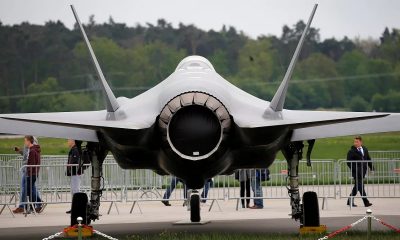
 EUROPE6 days ago
EUROPE6 days agoF-35 debate intensifies across Germany and Europe
-
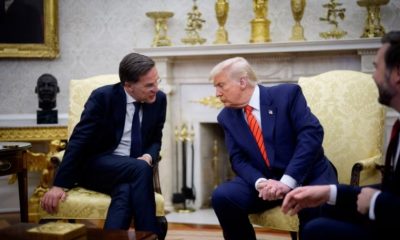
 EUROPE1 week ago
EUROPE1 week agoEurope plans for US absence in NATO with 5-10 year strategy
-

 ASIA2 weeks ago
ASIA2 weeks agoChina’s AsiaInfo expands with DeepSeek-powered AI
-

 EUROPE2 weeks ago
EUROPE2 weeks agoFrench defense industry gears up for war amid EU strategic autonomy push
-
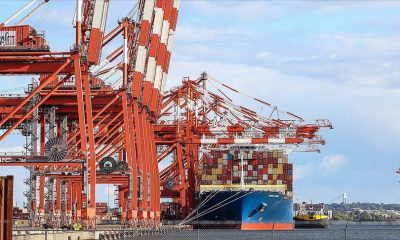
 DIPLOMACY7 days ago
DIPLOMACY7 days agoTrump’s proposed fees on Chinese ships threaten US maritime industry
-

 AMERICA2 weeks ago
AMERICA2 weeks agoTrump’s tariffs drive Nvidia to invest heavily in US manufacturing
-

 ASIA5 days ago
ASIA5 days agoBeijing’s energy rules threaten Nvidia H20 chip sales in China
-
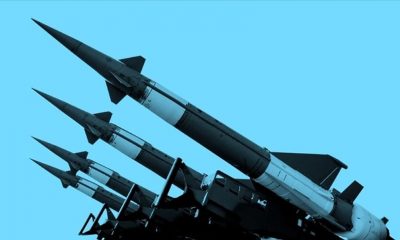
 EUROPE7 days ago
EUROPE7 days agoCalls for German nuclear armament grow louder


















